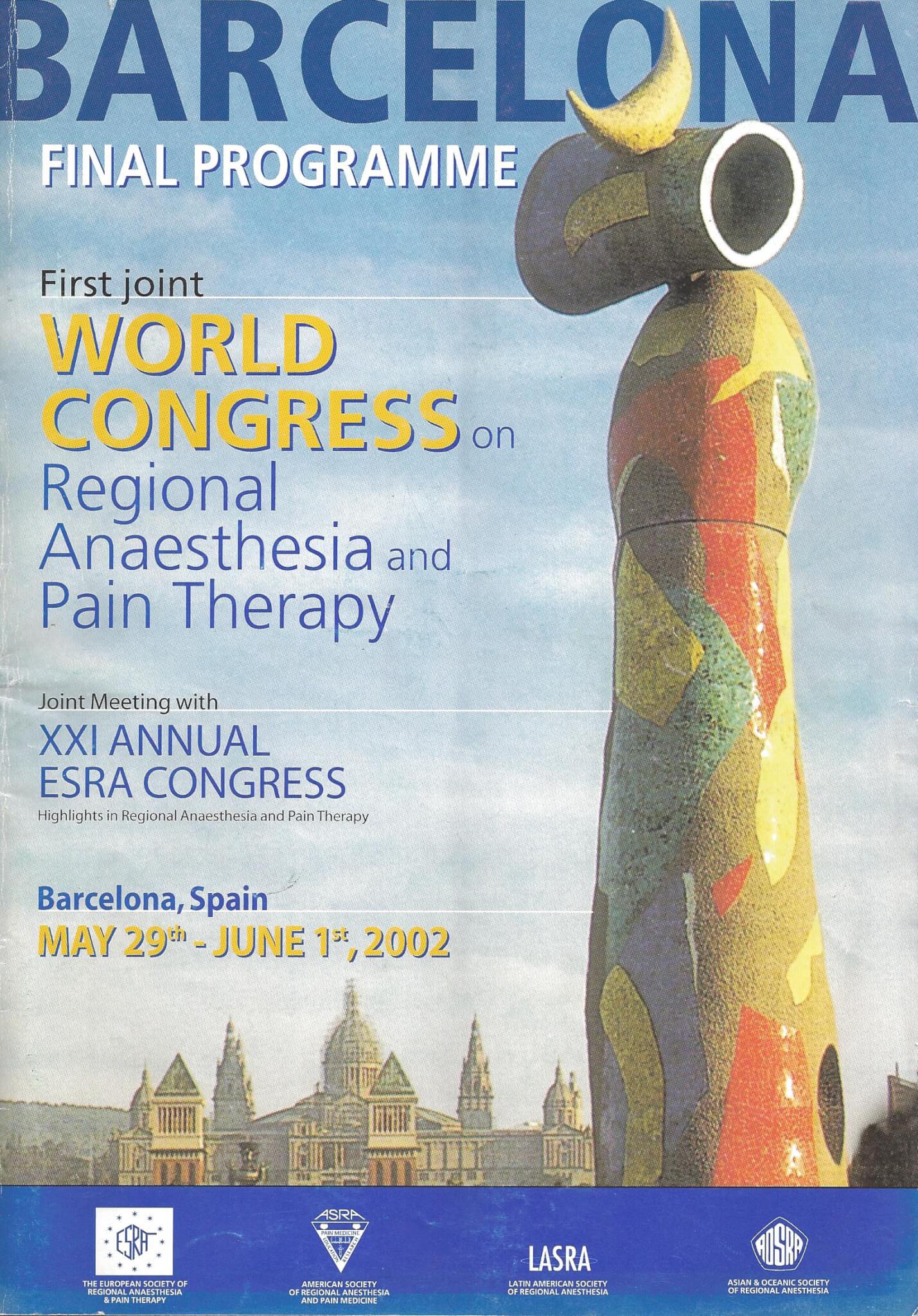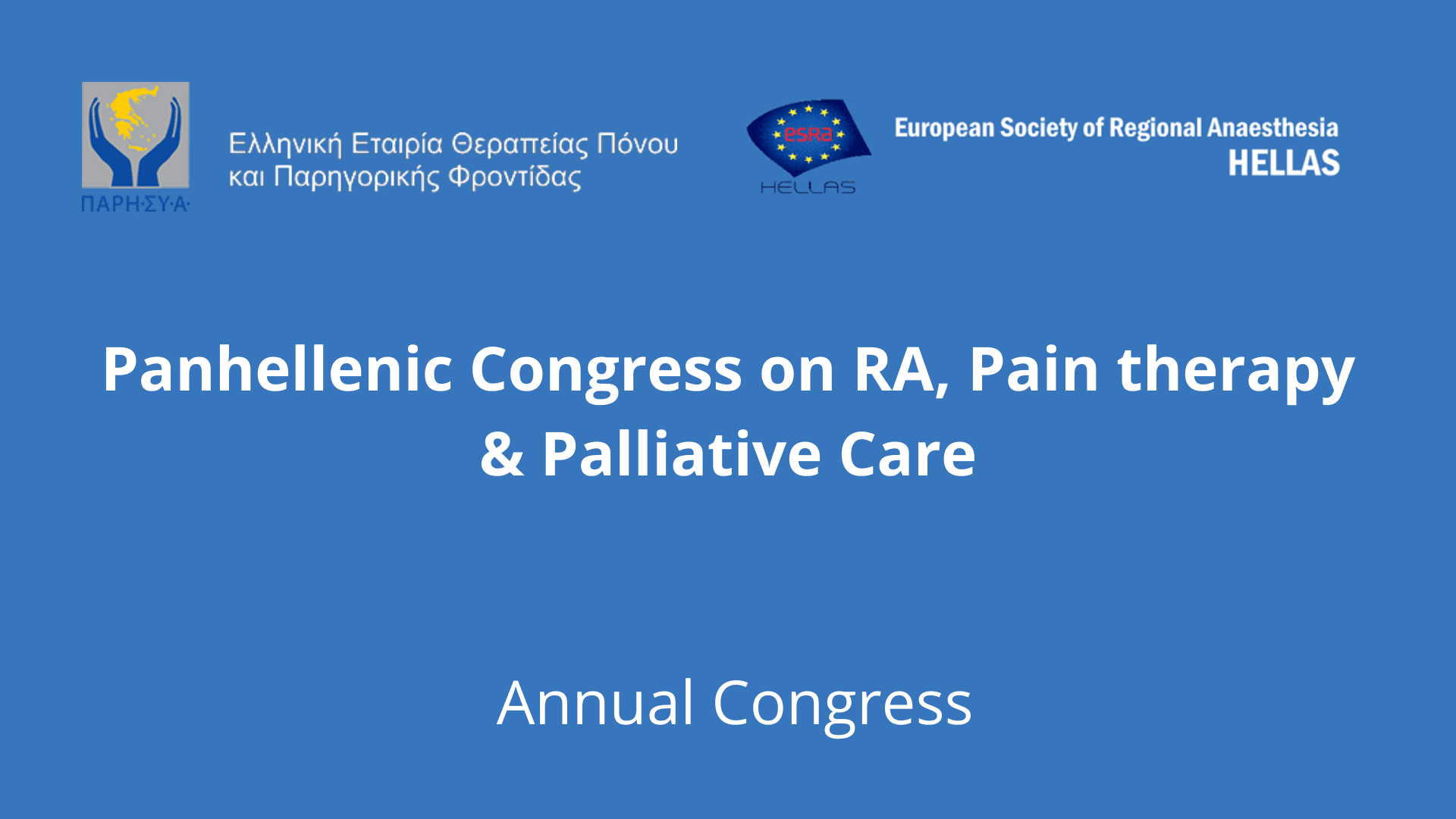DO WE NEED A TEST DOSE FOR EPIDURAL ANAESTHESIA IN OBSTETRICS?: CON

ESRA Highlights
21st Annual ESRA Congress
29th May – 1st June, 2002, Barcelona, Spain
Congress Highlights
DO WE NEED A TEST – DOSE FOR EPIDURAL ANAESTHESIA IN OBSTETRICS?: CON
Andre Van Zundert
Catharina Hospital
Eindhoven – The Netherlands
For full text in pdf form click here.
Although anesthesiologists live daily with Fail-Safe Principles, e.g. pin index system; color coding system for medical gases; the fluted oxygen knob and rotameters; agent- specific filling devices for volatile anesthetics; and multiple alarms on the anesthetic machine, no such thing is available in obstetric epidural practice.
Although epidural anesthesia has an excellent safety record when used in obstetrics, complications may occur, often when it is least expected. Two potential catastrophes may be encountered when performing an epidural block in the obstetric patient: inadvertent dural puncture or “wet tap” and inadvertent intravenous intravenous injection of a local anesthetic solution.
True Massive Epidural Block involves overdosage of local anesthetic via a correctly placed needle or catheter, while systemic toxicity, subdural and total spinal block are produced by injecting appropriate amounts of local anesthetic for epidural block into an incorrectly placed needle or catheter. An Unintentional Subdural or Subarachnoid Injection of local anesthetics, producing possibly a high or total spinal block, is at best an embarrassment and at worst a live threatening complication, which, if not recognized immediately, requires prolonged resuscitation. Large volumes of local anesthetic injected in the subarachnoid space will cause not only a total spinal block but may even cause neurological deficits. Clinical signs and symptoms of a subarachnoid block will be seen showing e.g. paralysis of the preganglionic sympathetic and cardioaccelerator fibers, the intercostal muscles and the diaphragm, and finely loss of consciousness, due to decreased cerebral blood flow. An Unintentional Intravascular Injection of local anesthetics, resulting in a toxic reaction, is possible in the gravid parturient near term, in which epidural veins are markedly dilated making entry even more likely. Systemic toxicity, due to action of the drugs on excitable membranes in the brain and heart, may produce numbness of the tongue, metallic taste in the mouth, light-headedness and tinnitus, visual disturbances, strange behaviour and incoherent speech, muscle twitching, unconsciousness, convulsions, vasodilatation, reduced cardiac output and a profound hypotension. Accidental rapid intravenous injection of a large amount of local anesthetic solution will result in a grand mal convulsion and possibly cardiovascular collapse. With convulsions, effective respirations cease, and hypoxia, hypercapnia and lactic acidosis develop within 30 s. Even maternal deaths associated with epidural anesthesia have been reported. Το complicate matters further, epidural catheters that have been functioning normally at a previous injection may migrate into epidural veins or into the subarachnoid space. There can be a considerable movement of the skin and soft tissues over the lumbar spine with change of position in a patient, especially in obese patients.
Α prudent vigilant anesthesiologist can avoid these iatrogenic errors if meticulous attention to detail is given. How does one assure that large doses of local anesthetics intended for epidural placement in the obstetric patient are not inadvertently injected into the subarachnoid space or into an epiduraI vein? One should know the indications, contra-indications and use of the local anesthetic to be used prior to administering it. Select the optimum block technique and always have resuscitation equipment and drugs at hand, just in case. Μοnitor the mother’s vital signs, fetal heart rate and uterine contractions. After inserting the epidural needle, aspiration for blood or CSF should be performed before and after inserting the epidural catheter. Lower the epidural catheter below the operating table, as gravity may help blood to enter the epidural catheter when a vein is penetrated. Check the drug yourself you intend to inject into the epidural space. You can use a pharmacological test dose, containing sufficient local anesthetic and epinephrine to rule out unintentional positions. Carefully observe the patient while injecting, and talk to the patient to detect subjective signs and symptoms of unintentional subarachnoid or intravenous injections. Fractionate the larger dose, inject slowly and allow sufficient time to elapse between the incremental doses.
What measures should we take when an inadvertent perforation of an epidural blood vessel or the dura occur? When gross blood is aspirated from an epidural catheter, the catheter should be withdrawn a few millimetres and cleaned with saline until the aspirate is clear. Otherwise, the catheter should be withdrawn and re-inserted at another interspace. When symptoms of an iv injection occur, the injection should be stopped and 100% oxygen is given. If convulsions occur, they should be controlled and a free airway should be secured (intubation and ventilation), Therapy of a cardiac collapse include large doses of epinephrine, titrated doses of bicarbonate and anti-arrhythmic drugs (e.g. lidocaine), possibly to be given via the trachea to reach the central vascular system. CΙosed chest cardiac compressions may not be effective in a gravid parturient near term. The baby must be delivered immediately or direct open chest cardiac massage performed with expert manual displacement of the gravid uterιιs. One should be prepared for a long period of cardiac resuscitation (more than one hour in case of bupivacaine toxicity may be necessary).
Α dural puncture is usually obvious with a gush of fluid coming from the hub of the Tuohy needle. Spinal fluid will feel warm to the forearm and can be tested for a neutral pH or sugar content with dextrostix. In a low dose technique for vaginal deliveries, an epidural catheter can be placed at another segment. In case of a caesarean section, it is wise not to continue with an epidural technique, but to perform spinal anesthesia, because epidurally injected local anesthetics will always leak into the subarachnoid space through the hole made by the Tuohy needle. An inadvertent subarachnoid injection of local anesthetic intended for epidural anesthesia will rapidly produce a high or more likely a total spinal block. If the patient receives proper respiratory and cardiovascular support, the block usually regresses and dissipates with no neurological complications. Furthermore, it has been suggested to withdraw CSF as much as possible if the catheter is in the subarachnoid space and to replace it with physiologic saline. Therefore do not remove the catheter.
Ιn case a catastrophe occurs from systemic toxicity or total spinal anesthesia, ask for at least one knowledgeable person to help you treating the patient more effectively. Catastrophes during epidural anesthesia for obstetrics as systemic toxicity and total spinals may occur, but should never end up with a decerebrated, paralyzed or dead patient. If treated well, the outcome should be as good as perfect, with no sequelae whatsoever. Therefore the anesthesiologist should always be highly suspicious that, in spite of a negative result, misplacement of epidural catheters can still be present. The price of safety is eternal vigilance, and the precautions taken are just step-by-step factors that are all important in performing epidural anesthesia to the benefit of both mother and fetus.
Recommendations in Obstetric Epidural Anesthesia
A. Technical
1. Master obstetric anesthesia techniques in the OR as obstetric anesthesia is not the place to try out / teach new techniques
2. Verify the exact position of epidural needles/catheters
-
passive return by gravity
-
aspiration test for
– blood (remove filter first!)
– CSF: check for temperature, glucose/protein content
-
pharmacological test dose?
1. effective test dose = sufficient local anesthetic + ΙV marker
2. effective markers of iv location of needle/catheter
a. local anesthetics: subtoxic doses produce signs and symptoms of CNS toxicicty
b. effective iv markers
i. there is a need for extra monitoring of the mother
ii. sensitivity and specificity – false + /- results
iii. epinephrine:
1. 10 to 15 Bg – after uterine contraction
2. safety issues: UBF
3. what if patient is οn – blockade?
4. what if pre – eclampsia or HELLP syndrome?
iv. isoproterenol
v. ephedrine
vi. others: air – opioids – suxamethonium
c. effective markers of subarachnoid position?
Sufficient local anesthetics to produce block in subarachnoid space. Give it the time (3 min!) and test adequately
1. hypotension is not a reliable sign
2. excessive sensory block/analgesia
3. substantial motor block with early onset
4. choice local anesthetic: lido vs bupi
3. Use intermittent doses / incremental doses and check continuous infusions on a regular base.
Β. Conclusions.
-
Each injection given in obstetric anesthesia should be done while talking to the parturient so that you can learn from the patient if anything would go wrong.
-
Every dose given in epidural analgesia for vaginal delivery should be a test dose. Therefore check the results of any injection so that you are sure in which space the local anesthetic was injected. Use an appropriate amount of local anesthetic and take appropriate steps accordingly. Especially the combined spinal-epidural anesthesia technique is a very safe technique to use in obstetric anesthesia, in which it is not necessary to use large amounts of local anesthetics. Α small amount is injected in the subarachnoid space, e.g. 1 to 2 mg bupivacaine + 10-15 mg epinephrine + a small dose of opioids (sufentanil or fentanyl), which will produce analgesia for up to + /- 90 minutes. As such a sensory block is achieved with an upper level of about T10. The epidural space can be used to administer a top-up, using also a low dose – low concentration technique, to adjust to the appropriate level. This is called the sequential CSE technique.
-
The CSE technique offers us the benefit of two worlds: the rapid onset of analgesia produced by the subarachnoid block combined with the flexibility of an epidural catheter. In a low dose-low concentration technique no longer the use of a test dose per se is warranted, provided that constant vigilance is taken care off.






